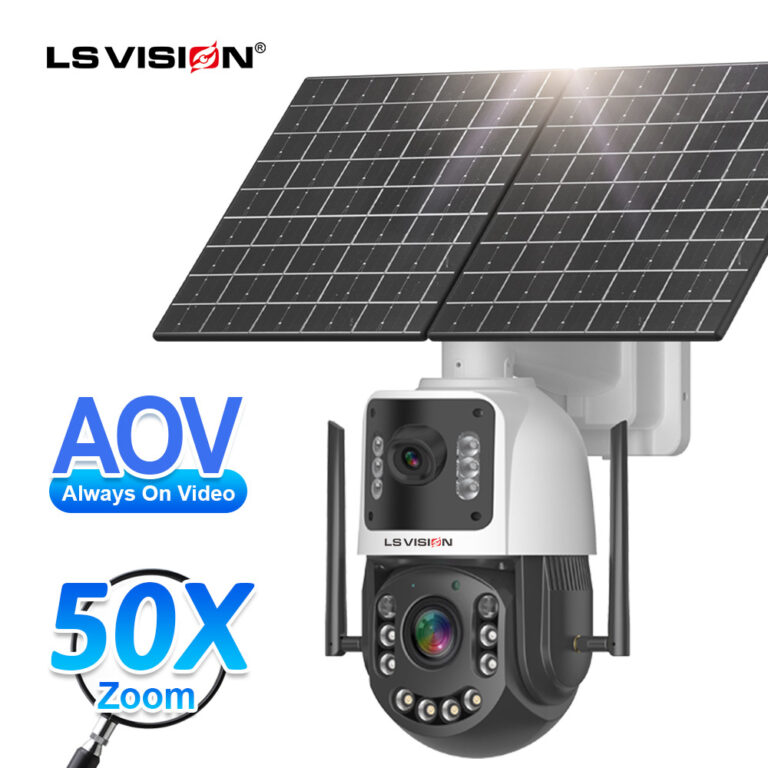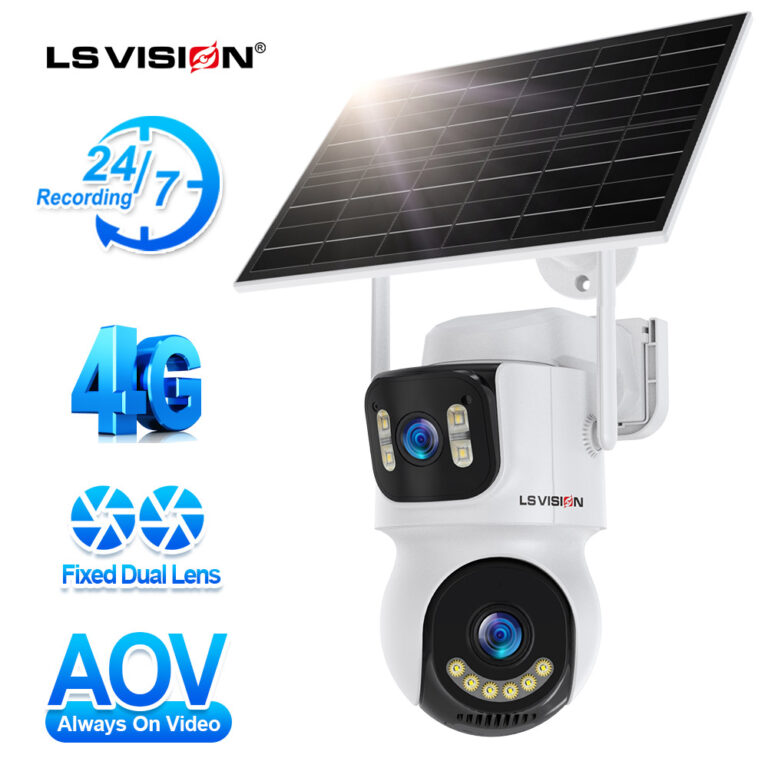There are two main categories of low-power cameras: battery cameras and outdoor solar cameras. How is their usage time calculated? This blog will try to analyze it with you.
1. The composition of power consumption
Low-power cameras are divided into three categories of power consumption:
The first is static power consumption, which is the power consumption when the camera is not pulling video streams. It includes PIR power consumption, keep-alive power consumption between WiFi and router, and sleep power consumption of other devices.
The second is the power consumption of the fill light, which is the fill light power consumption of the camera at night. Fill light is divided into infrared light and white light (or soft light), and the power consumption of the two is very different.
The third is the working power consumption, which is the power consumption of the camera when pulling the video stream normally, which includes all power consumption except related to the fill light.
Since the low-power camera is in sleep state most of the time and only starts to work when PIR is triggered or wakes up from remote streaming, so static time = total power-on time – working time. However, because the working time is extremely small compared to the static time, for the convenience of calculation, we directly equate the static time with the total power-on time.
Considering that the camera does not turn on the fill light during the day and turns on the fill light at night, the working power consumption during the day = working power consumption; the working power consumption at night = working power consumption + the power consumption of the fill light;
Daily average power consumption = static power consumption * 24h + daytime working power consumption * daytime working hours + nighttime working power consumption * nighttime working hours
So how to calculate the usage time? Number of days of use = battery capacity / average daily power consumption.
2. Battery camera
For the convenience of calculation, it is assumed that the static power consumption of the battery camera is 1mA, the operating power consumption is 300mA, and the fill light power consumption is 300mA. The total capacity of two 18650 batteries is 5200mAh, and the actual capacity is reduced by 20%. Assuming that it works 20 times a day, 10 times during the day and 15 seconds each time at night, the battery camera can be used for 67.6 days.
See the Easter egg at the end for detailed calculation methods.
The overall logic of outdoor solar cameras is the same as that of battery cameras, but considering the static power consumption of 4G, it will be much higher. Assume static power consumption of 10mA. Under the same conditions of use and without solar charging at all, the outdoor solar camera can be used for 14.9 days.
See the Easter egg at the end for detailed calculation methods.
So how to calculate the charging power of solar panels?
Assuming that 80% of the battery capacity is reserved to cope with extreme continuous cloudy weather, the solar panel needs to fully charge the battery in 20% of the available days. That is 14.9 days x 20% = 2.98 days.
Assuming that there are 5 hours of sunshine per day and considering that the charging efficiency of the solar panel is 80%, the solar panel needs to fully charge the battery in 11.92 hours. That is 2.98 x 5 x 80% = 11.92 hours.
The power consumption requirement of the solar panel is 1.6W, and 2W solar panels can be selected. That is 5200mAh x 3.7V / 11.92 = 1.6W.
Last words
For battery cameras and outdoor solar cameras, different markets and users have very different usage methods, and the calculation coefficients they bring are also very different. Therefore, the calculation and design of the usage time of battery cameras and outdoor solar cameras must be based on local conditions. The core is to achieve the cost advantage of battery capacity and solar panel charging power while ensuring that customer complaints are controllable.
The following:
Battery camera usage time:
1. Daily average power consumption = static power consumption * 24h + daytime working power consumption * daytime working hours + nighttime working power consumption * nighttime working hours; 1mA*24h + 300mA*150s + (300mA+300mA) *150s = 24mAh + 37.5mAh = 61.5mAh
2. Number of days of use = battery capacity / average daily power consumption = 5200mAh * 80% / 61.5mAh = 67.6 days
4G outdoor solar camera usage time:
1. Daily average power consumption = static power consumption * 24h + daytime working power consumption * daytime working hours + nighttime working power consumption * nighttime working hours; 10mA*24h + 300mA*150s + (300mA+300mA) *150s = 240mAh + 37.5mAh = 277.5mAh
2. Number of days of use = battery capacity / average daily power consumption = 5200mAh * 80% / 277.5mAh = 14.9 days
If you have different opinions and suggestions on our articles, welcome to contact us for further discussion together!














